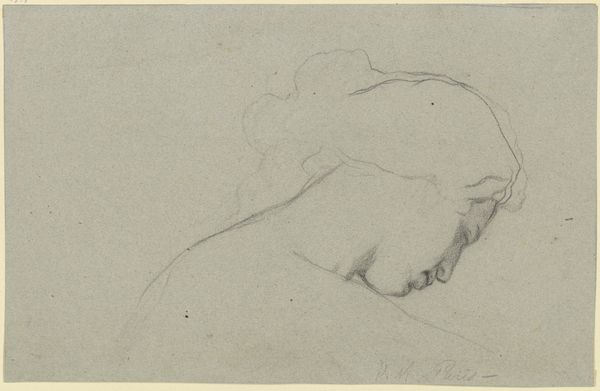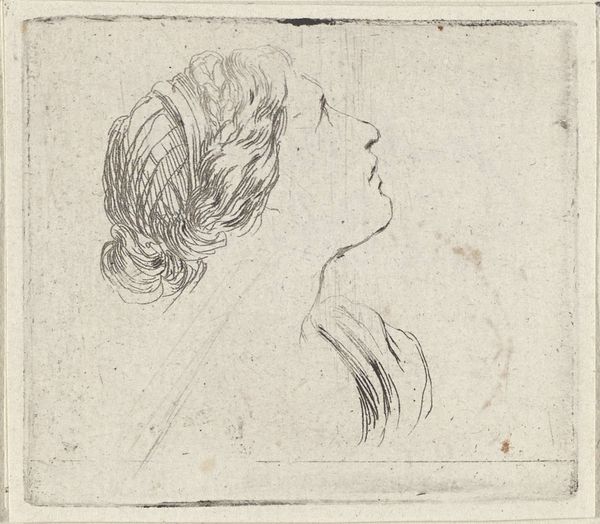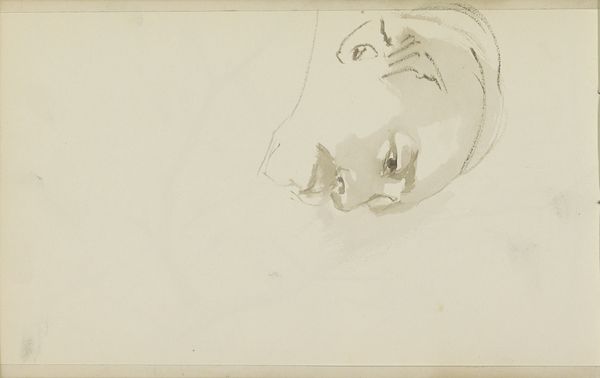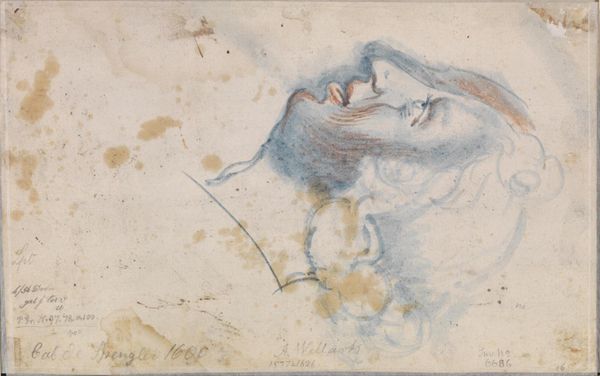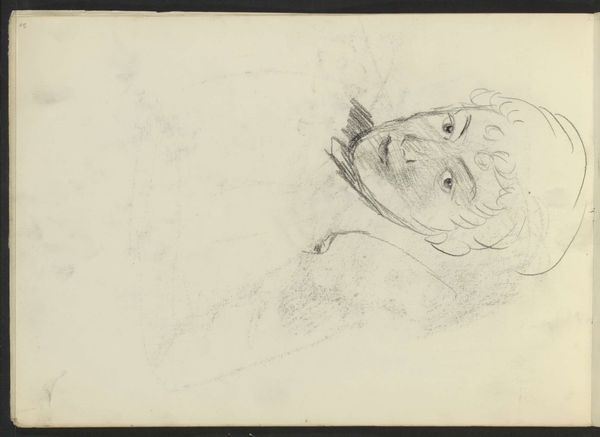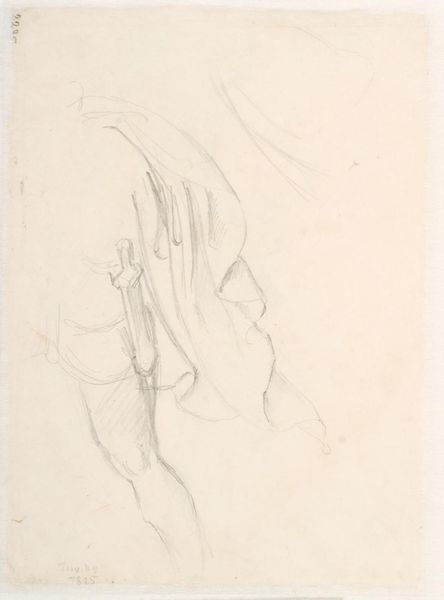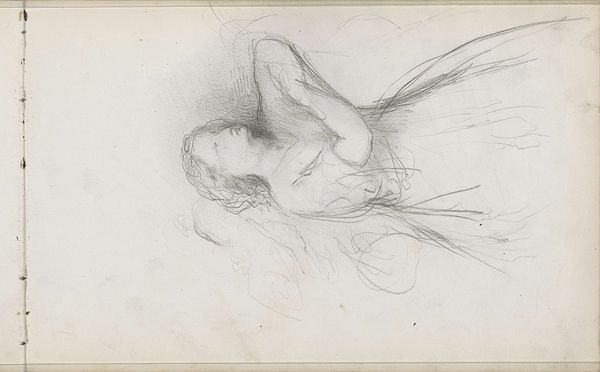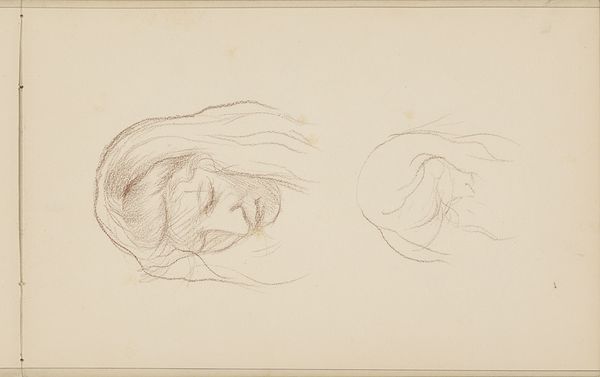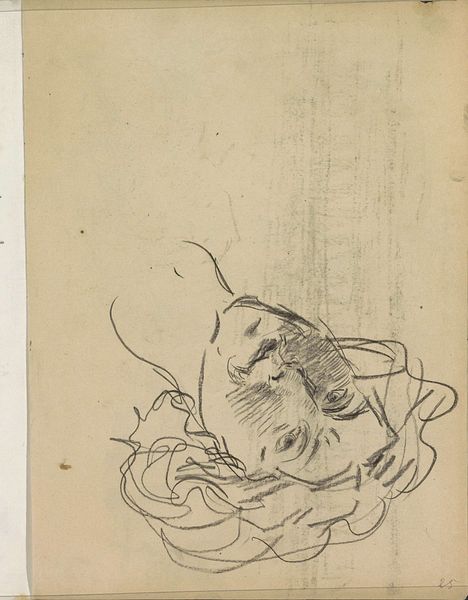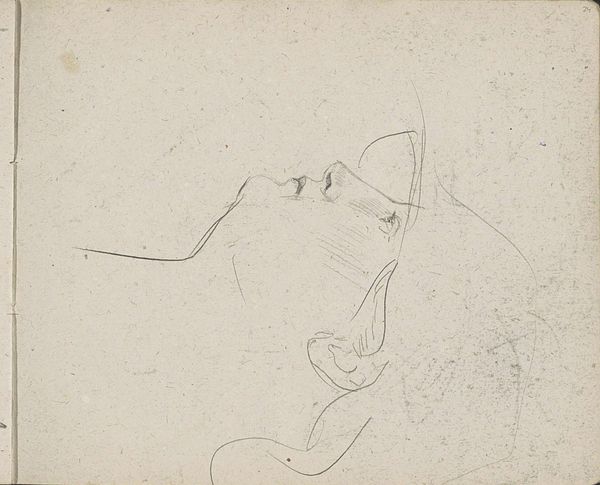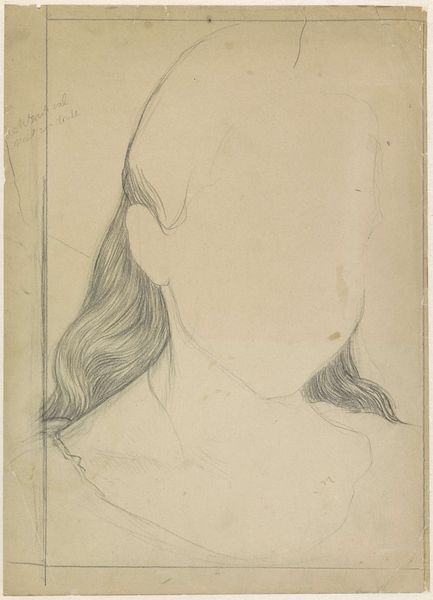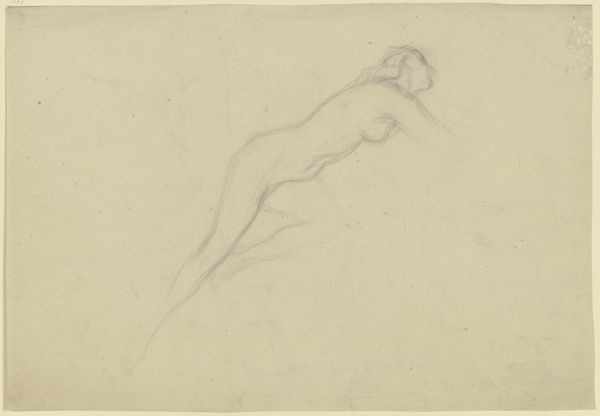
drawing, paper, pencil
#
portrait
#
pencil drawn
#
drawing
#
16_19th-century
#
paper
#
pencil drawing
#
pencil
#
portrait drawing
Copyright: Public Domain
Curator: Looking at this study, Backwards-Bent Head of a Woman, Seen from Below, one is immediately struck by the fragility of the line work, the tenderness of the subject. Editor: It feels incredibly intimate, almost vulnerable. The upward gaze combined with the soft pencil strokes give a sense of yearning, doesn't it? Curator: Precisely. Think of the 19th-century salon. Women, especially, were often scrutinized, their images commodified. This drawing subverts that objectification. The perspective literally inverts the power dynamic. Whose gaze is privileged here? Editor: The tilted viewpoint definitely complicates that. I'm drawn to the texture of the paper, too. You can almost feel the tooth of it against the pencil lead. How would a study like this relate to Muller's finished portraits? Was this part of the process, refining an ideal, a representation of femininity in his time? Curator: Good question! Muller's era experienced a profound shift in gender roles, which impacted artistic representation. The "feminine ideal" was shifting. His artistic choices—subject, medium, and composition—might be conscious commentary on the constraints women faced. We see her expression isn't one of submission or allure, but introspection. Editor: Yes! Introspection—that's what I couldn't quite put my finger on. And thinking about the medium – a simple pencil on paper. It emphasizes the direct connection between the artist's hand and the subject. Almost like bearing witness. Curator: It really begs the question, doesn’t it: What kind of labor and what social relations went into making such art and what purpose did this labor have at this moment? The study itself is not the ultimate, commercially consumed, artwork. Editor: Looking closely, I notice the inscription at the bottom, what appears to read, "Paris." Was this completed while Muller worked there, immersed in its vibrant art scene? I see other details - those sketchy strokes suggest the artist made quick decisions based on fleeting impressions. Curator: Undoubtedly. It captures a moment in time, a feeling more than a polished ideal, perhaps reflecting or reacting to contemporary gendered ideals. What a thought-provoking work, one that offers so many insights. Editor: It really does open up a lot of perspectives. Thanks to this quiet study and your expertise, I see new depths to how artistic interpretations contribute to shifting societal norms.
Comments
No comments
Be the first to comment and join the conversation on the ultimate creative platform.
